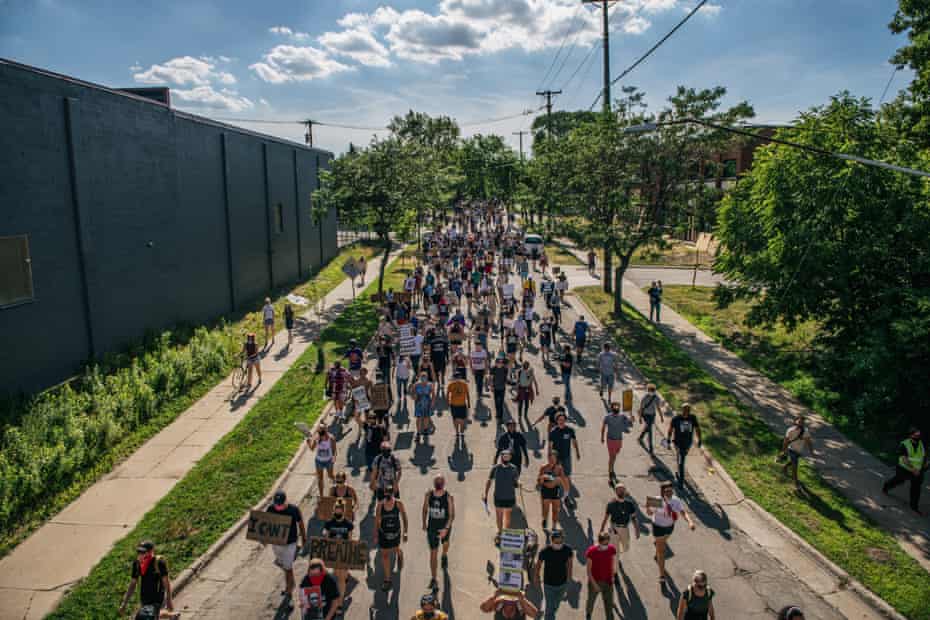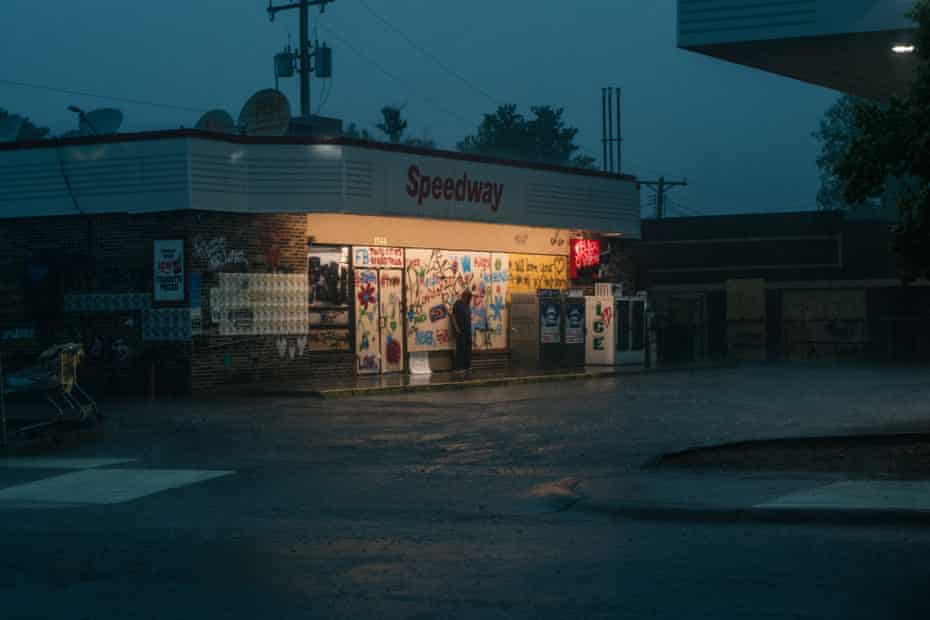At 9.52pm on 8 March 2020, my university sent out an email telling students that we would start our spring break a week early because of a potential Covid-19 case on campus.
What they couldn’t tell us right then is that over the course of the two weeks, I’d fly home to Minnesota, fly back to campus in New York to move out and fly back home to finish classes in my family home.
There was no way of knowing that a mere two months later I’d be living through the largest civil rights uprising since the 60s – rippling out across the country from Minneapolis and St Paul, sometimes known as the Twin Cities, after the police killed George Floyd.
That was on top of the fast-unfolding global pandemic that was forcing me to study from my childhood room.
It’s an almost dissociative sensation watching downtown Minneapolis, the city you’ve grown up in for 20 years, burn when you live only a few minutes’ drive away from the flames, in St Paul’s Como neighborhood.
No apocalyptic or post-apocalyptic movie could prepare me for the things I saw.
After the initial riots there was an eerie atmosphere during the day, as police vehicles and national guard tanks casually patrolled the streets. As soon as the sun set, the scene turned into what felt like a war zone as protesters prepped with medical remedies clashed with armed police dressed in riot gear.
I didn’t protest the first two days after George Floyd’s killing because my mother was worried that I would be arrested or killed.

The protest flyers and events on social media pleaded with me to take action. On day three, I decided that I couldn’t let others fight our battle alone so I took to the streets.
One protest turned into two, days turned into weeks and weeks turned into months of protesting – as much as my body and mental capacity could handle.
I went from party-hopping at my university pre-pandemic to protest-hopping in my home state. It became normal to leave home at 10am to protest and not return until night had fallen – due to curfew order – after attending two or three different demonstrations.
Lake Street, a few miles from where George Floyd died and the battleground for night one of the riots, was a dystopian sight.
The Wells Fargo bank whose free lollipops I craved as a child was completely charred from cars that were set ablaze in the drive-thru.
The outside was lined with the few desks and office supplies that survived the fire. The ATMs had been pried open and left empty. Shattered glass crunched under my feet.
Black smoke still rose from the heaps of ashes that were once buildings, for miles. It’s surreal watching streets that hold so many memories be reduced to practically nothing.
The vast majority of the protests remained peaceful even when violence was acted out against demonstrators.
Large-scale global protests showed the world that “good trouble” for change is possible.
I think it’s important to make clear that protesters and rioters are not synonymous. Most of the riots were started by instigators who crossed state lines or came from outside the city to intentionally cause destruction and undermine the movement.

In the same breath, some riots are expressions of extreme frustration and rage that boil over. I didn’t think the level of frustration and anger mixed with motivation and dedication I possessed in those months was possible.
For weeks I had a throbbing headache near my nape. I would sleep but never rest because of paranoia that I could be harmed by the police or white supremacists who had come to counter the civil rights protesters.
I woke up to paragraphs from people explaining why the death of George Floyd and other Black bodies were justified.
I woke up to other messages from close friends and acquaintances asking if I was safe and encouraging me to continue fighting.
From the ashes and rubble, a revolution formed. A revolution that mirrors those my grandmother was born into in Arkansas during the 60s.
In her youth she vividly remembers the traumatic experiences of white people refusing to serve her family on a road trip to Mississippi and her white third-grade teacher calling Black students the N-word.
Segregation showed itself through Black people living on one side of the railroads while white people lived on the other side and Black people sitting upstairs at the movie theaters.
She eventually moved to Minnesota where she thought there would be far less racism – she now knows that she was wrong.
“The south was more in-your-face. In Minnesota they try to hide it more but the same things are going on here,” she said.

Since my grandmother was a girl, the world has changed in so many ways, yet the fight for justice has been the same for centuries.
Now that the cameras are gone and protests are more sporadic, the world seems to have moved on from last summer.
The voices that once boomed across the downtown buildings have turned into a murmur. But Minnesota remembers. There is no going back to normal for us. As I drive on the icy streets I spent the summer marching on, I feel a sense of nostalgia and foreshadowing.
I’m certain that in the coming weeks, I will find myself marching on these streets again.
On 8 March 2021, exactly a year after I opened that email from my university, ex-officer and George Floyd’s killer, Derek Chauvin, is set to go on trial in Minneapolis. So, in effect, does the police department, the city and the criminal justice system itself.
This content first appear on the guardian
